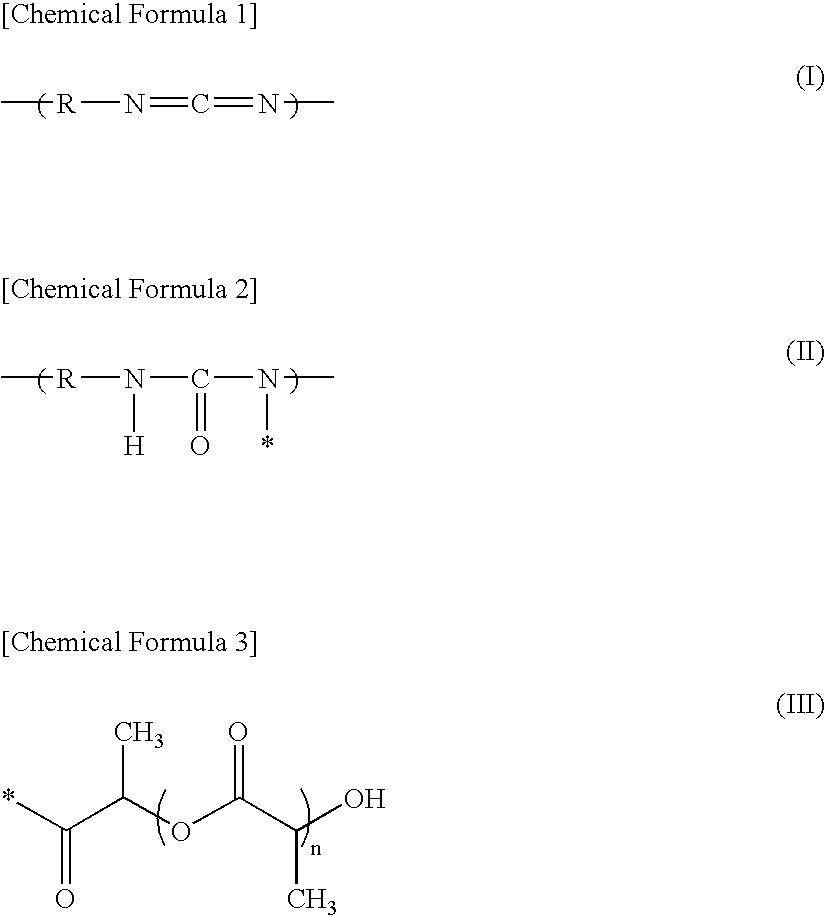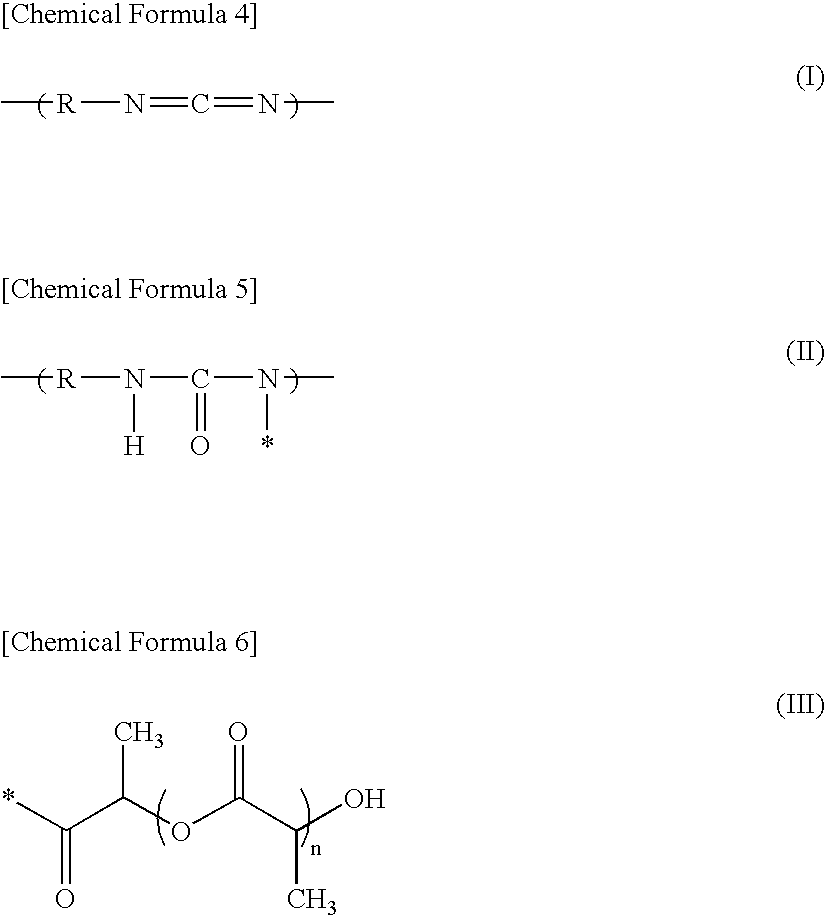Polylactic acid-modified polycarbodiimide compound and polylactic acid resin composition and molded article comprising the same
a technology of polycarbodiimide and polylactic acid, which is applied in the field of polylactic acidmodified polycarbodiimide compound and a molded article comprising the same, can solve the problems of poor durability, poor mechanical properties, and poor dispersion of polycarbodiimide phases in the composition, and achieve excellent hydrolysis resistance and improve the mechanical properties of the polylactic acid resin composition
- Summary
- Abstract
- Description
- Claims
- Application Information
AI Technical Summary
Benefits of technology
Problems solved by technology
Method used
Image
Examples
production example 1
Production 1 of Polylactic Acid Used for Polylactic Acid-modified Polycarbodiimide Production; Raw Material: Lactic Acid
[0042]L-lactic acid (first class grade chemicals) was placed in a flask equipped with a stirring motor and a cooling tube and subjected to dehydration reaction under reduced pressure at 150° C. for 6 hours, with generated water discharged from the system. The obtained reaction mass was precipitated with hexane to obtain polylactic acid (oligomer) having a number-average molecular weight of 300 to 500. In this context, the number-average molecular weight was determined by the quantification of terminal carboxylic acid.
production example 2
Production 2 of Polylactic Acid Used for Polylactic Acid-modified Polycarbodiimide Production; Raw Material: Lactide
[0043]L-lactide (first class grade chemicals) and 150 ppm tin octylate (for the L-lactide) were added to a flask equipped with a stirring motor and a cooling tube and subjected to polymerization reaction at 190° C. in a nitrogen atmosphere. The reaction time was adjusted to obtain polylactic acids differing in molecular weight. Their number-average molecular weights determined by the quantification of terminal carboxylic acid fell within the range of 1,000 to 20,000.
production example 3
Synthesis of Polylactic Acid-modified Polycarbodiimide Compound (A-1)
[0044]100 parts by mass of an aliphatic polycarbodiimide compound “CARBODILITE LA-1” (trade name, manufactured by Nisshinbo Industries, Inc.; carbodiimide equivalent=250 g / eq), 12 parts by mass of the polylactic acid having a number-average molecular weight of 300 (obtained in Production Example 1), and 1000 parts by mass of chloroform were added to a flask equipped with a stirring motor and a cooling tube and subjected to reflux at 65° C. for 6 hours. Then, the solution was reprecipitated with methanol to obtain a polylactic acid-modified polycarbodiimide compound (A-1). The obtained polylactic acid-modified polycarbodiimide compound had a carbodiimide equivalent of 310 g / eq and a polylactic acid grafting rate of 10% by mol.
PUM
| Property | Measurement | Unit |
|---|---|---|
| Percent by mass | aaaaa | aaaaa |
| Percent by mole | aaaaa | aaaaa |
| Mass per equivalent | aaaaa | aaaaa |
Abstract
Description
Claims
Application Information
 Login to View More
Login to View More - R&D
- Intellectual Property
- Life Sciences
- Materials
- Tech Scout
- Unparalleled Data Quality
- Higher Quality Content
- 60% Fewer Hallucinations
Browse by: Latest US Patents, China's latest patents, Technical Efficacy Thesaurus, Application Domain, Technology Topic, Popular Technical Reports.
© 2025 PatSnap. All rights reserved.Legal|Privacy policy|Modern Slavery Act Transparency Statement|Sitemap|About US| Contact US: help@patsnap.com



